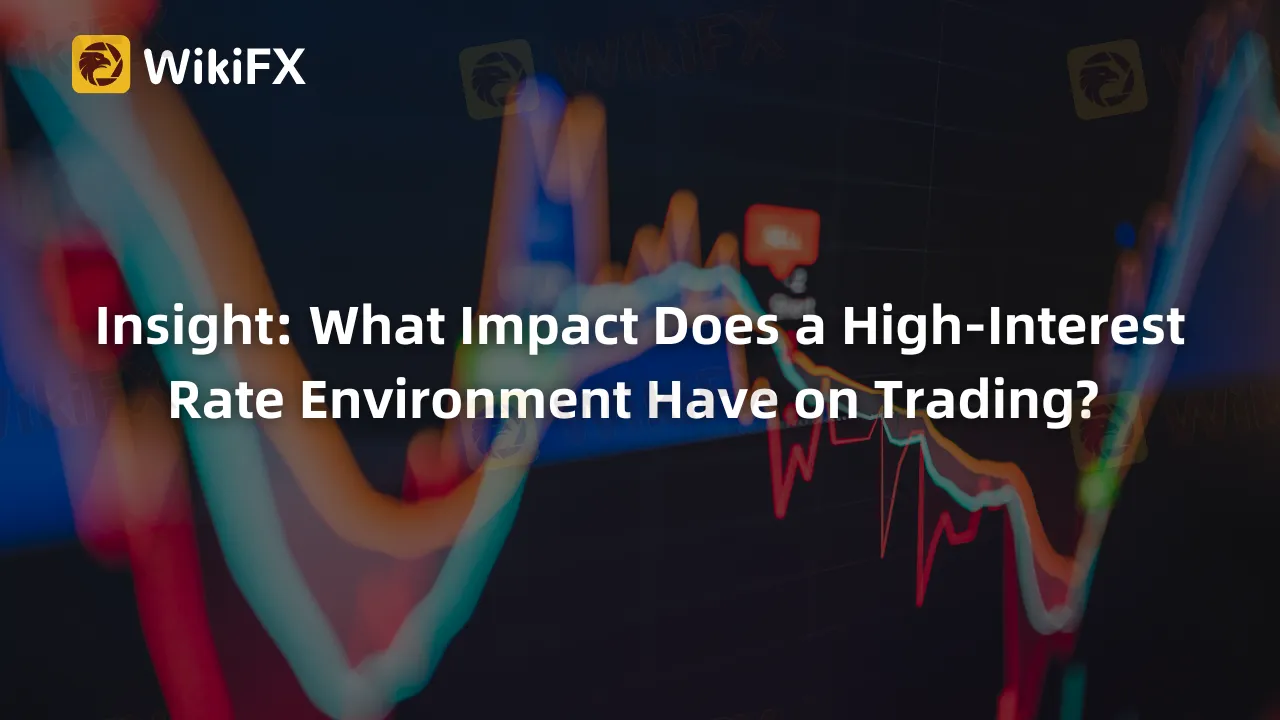简体中文
繁體中文
English
Pусский
日本語
ภาษาไทย
Tiếng Việt
Bahasa Indonesia
Español
हिन्दी
Filippiiniläinen
Français
Deutsch
Português
Türkçe
한국어
العربية
Insight: What Impact Does a High-Interest Rate Environment Have on Trading?
Abstract:Trading in a low-interest-rate environment poses both challenges and opportunities due to increased market volatility and inflation. However, strategies like dividend investing and growth investing can be lucrative. Traders need a comprehensive understanding of market dynamics and a well-defined strategy for effective navigation.

For traders eyeing a high-interest-rate landscape, understanding the intricate dynamics at play is paramount. This educational article aims to demystify key considerations, outlining strategies for effective maneuvering, and highlighting both risks and benefits.
At the outset, comprehending the market forces underpinning high-interest-rate scenarios is vital. Increased interest rates often stimulate demand for assets, potentially catalyzing trading activity. While this surge provides traders with increased buying and selling opportunities, it also escalates risk since asset prices can swiftly fluctuate in response to interest rate alterations.
Volatility is a prominent character in high-interest-rate environments. Exorbitant interest rates can precipitate swift market price adjustments, necessitating traders to anticipate sudden and substantial losses. Consequently, adopting a lucid trading strategy that factors in potential volatility is fundamental.
Inflation is another concern in high-interest-rate scenarios. Higher interest rates can accelerate the cost of goods and services, indirectly affecting investment values. Therefore, recognizing inflation potential and being ready for possible losses is crucial for traders.
Finally, in a high-interest-rate environment, the potential for currency risks should not be overlooked. Rising interest rates can correspondingly elevate a currency's value, diminishing the worth of investments denominated in that currency, and leading to potential losses.

Despite these challenges, high-interest-rate environments offer several benefits:
Enhanced Profits: The potential for amplified profits due to heightened returns on investments makes high-interest environments appealing to traders.
Leveraging Opportunities: High-interest rates can facilitate increased leverage for traders by lowering borrowing costs and enabling higher risk assumptions with reduced volatility exposure.
Improved Cash Flow: Higher interest rates may yield more investable cash, enabling traders to exploit market opportunities and potentially magnify profits.
Heightened Market Liquidity: High-interest rates can bolster market liquidity, allowing swift position entry and exit, especially beneficial for short-term traders or those requiring immediate liquidity access.
Reduced Borrowing Costs: High-interest rates can decrease borrowing costs, advantageous for traders requiring capital to fund trading activities.
Trading strategies suitable for high-interest-rate environments include:
Carry Trade: Borrowing in low-interest-rate currencies and investing in high-interest-rate currencies to exploit the interest rate differential.
Interest Rate Swaps: Trading fixed interest rate payments for floating ones on a specific debt instrument to capitalize on a higher fixed interest rate while also benefiting from possible floating rate hikes.
Cash and Carry Trade: Buying an asset while concurrently selling a futures contract on the same asset to benefit from a higher spot price and potential future price increases.
Short Selling: Selling an asset expected to depreciate in value, buying it back at a lower price when the value decreases to exploit a lower spot price and potential price reductions.
In conclusion, trading in a high-interest-rate environment can offer substantial gains but comes with inherent risks. By understanding market dynamics and being prepared for volatility, inflation, and currency risks, traders can better mitigate potential losses. Always remember, a well-devised trading strategy is essential for success in these scenarios.
Download and install the WikiFX App on your smartphone to stay updated on the latest news.
Download the App here: https://social1.onelink.me/QgET/px2b7i8n

Disclaimer:
The views in this article only represent the author's personal views, and do not constitute investment advice on this platform. This platform does not guarantee the accuracy, completeness and timeliness of the information in the article, and will not be liable for any loss caused by the use of or reliance on the information in the article.
Read more

Never Heard of Dynasty Trade? Here's Why You Should Be Worried
Have you heard this name before? No , it’s time you do because staying unaware could cost you. This platform is currently active in the forex trading and has been linked to several suspicious activities. Even if you’ve never dealt with it directly, there’s a chance it could reach out to you through ads, calls, messages, or social media. That’s why it’s important to know the red flags in advance.

Want to Deposit in the EVM Prime Platform? Stop Before You Lose It ALL
Contemplating forex investments in the EVM Prime platform? Think again! We empathize with those who have been bearing losses after losses with EVM Prime. We don't want you to be its next victim. Read this story that has investor complaints about EVM Prime.

WEEKLY SCAM BROKERS LIST IS OUT! Check it now
If you missed this week's fraud brokers list and are finding it difficult to track them one by one — don’t worry! We’ve brought together all the scam brokers you need to avoid, all in one place. Check this list now to stay alert and protect yourself from fraudulent brokers.

Catch the Latest Update on BotBro & Lavish Chaudhary
BotBro, an AI-based trading platform, became popular in India in 2024—but for negative reasons. Its founder, Lavish Chaudhary, who gained a huge following by promoting it heavily on social media. Since then, he has become well-known, but for many controversies. Let’s know the latest update about Botbro & Lavish Chaudhary.
WikiFX Broker
Latest News
Olymptrade Under Fire – Fraud Allegations and Investor Outrage
Hantec Markets Appoints New Executives for Growth in Dubai
Is the Forex Bonus a Genuine Perk or Just a Gimmick?
OctaFX Was Fined $37,000 for Operating Without a License
What Role do signals play in the forex trading?
5 Reasons Why Traders Are Losing Trust in Headway Broker
What WikiFX Found When It Looked Into Vestrado
Hantec Financial: A Closer Look at Its Licenses
eToro Joins Hands with Premiership Women’s Rugby
RM750 Million Lost to Investment Scams in Just Six Months
Currency Calculator


